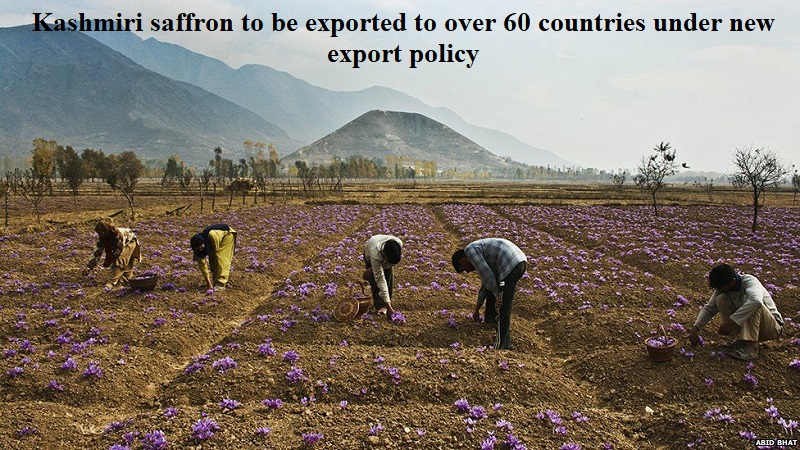
The renown of Kashmiri saffron reverberates across the globe, and within Jammu and Kashmir, the second largest producer, the state government is gearing up to amplify saffron output through a fresh export strategy.
In a strategic move, the government has meticulously selected 60 nations where the demand for Kashmiri saffron is substantial.
Acknowledged as red gold, saffron ranks among the world’s most expensive spices. Currently, its cultivation is confined to a mere 4,000 hectares of land. Specialists attest to the superior quality of Kashmiri saffron, attributing its excellence to the region’s favorable climatic conditions. Bolstered by the new export policy’s execution, Kashmiri saffron holds the potential to outshine its Iranian counterpart.
The Department of Agriculture has disclosed that the forthcoming two months will witness the operationalization of the new export policy, a development poised to invigorate saffron cultivators in the valley.
Chowdhary Mohammad Iqbal, Director of the Department of Agriculture, Kashmir, expounded, “Kashmir Valley’s saffron is renowned. Its exceptional quality is attributed to the favorable climatic conditions in which it is cultivated. While efforts to augment saffron production are underway, we are concurrently focusing on the export policy. We’ve pinpointed countries as potential buyers of our produce, including Dubai, America, and Israel, which are prominent consumers of Kashmiri saffron.”
Saffron finds applications in cosmetics, cuisine, pharmaceuticals, and rituals. Since obtaining the Geographical Indication (GI) tag that underscores its exclusivity in the global market, Kashmiri saffron’s value has surged significantly. It once sold for 60,000 rupees, but now commands approximately 2,50,000 rupees.
Over the past decade, the saffron cultivation area has diminished from 5,000 hectares to 4,000 hectares, with about 90 percent of cultivation occurring in the Pampore region of Pulwama district. Under the novel export policy, the government has identified alternative districts with suitable terrain for saffron farming.
Iqbal elucidated, “The data indicates a contraction in saffron cultivation area, yet our approach involves gradual expansion into other regions. We aim to safeguard this heritage crop, increase cultivation space, and identify areas boasting optimal climatic conditions for saffron growth.”
The government aspires that the new export policy will galvanize more individuals to engage in saffron cultivation.

Post Your Comments